Imagine a layer beneath your feet that’s not hard and steady like you think. It’s a squishy, flowing part of our planet that makes the ground shake and volcanoes erupt. This hidden gem, the asthenosphere, is crucial to understanding our dynamic planet.
Facts on the Asthenosphere
Think of the Earth like a gooey chocolate chip cookie. The hard, crunchy part on top? That’s like the Earth’s lithosphere, the solid outer layer we live on. But right below that, you’ve got the soft, chewy layer where the chocolate chips sink in – that’s our asthenosphere!
What’s the Asthenosphere Made Of?
Instead of cookie dough, the asthenosphere is made of a very hot, partially molten rock called peridotite. The intense heat, reaching between 1,400 and 3,000 degrees Celsius, makes the rocks in the asthenosphere incredibly gooey, almost like putty. This semi-molten state is key to the asthenosphere’s unique properties and its role in shaping the Earth’s surface.
How Deep Are We Talking?
The asthenosphere hangs out about 50 to 124 miles below the surface, but its depth varies. It’s closer to the surface under the oceans, around 50 to 140 km down, and deeper under the continents, around 40 to 280 km down.
The Asthenosphere: Earth’s Mover and Shaker
The asthenosphere is the engine driving the Earth’s slow but powerful movements. Because it’s gooey, the giant plates that make up the Earth’s lithosphere can actually slide around on top of it. These plate movements are what cause earthquakes, create towering mountain ranges, and form deep ocean trenches.
Volcanoes and the Asthenosphere: A Hot Connection
Ever wonder where the molten rock that erupts from volcanoes comes from? You guessed it – the asthenosphere! The intense heat can create plumes of molten rock (magma) that rise up through the Earth’s mantle. If they reach the surface, you get a volcano!
Unraveling the Mysteries of the Asthenosphere
While we know a lot about the asthenosphere, scientists are still working to understand its complexities. It’s not like we can just dig down there and take a look! We rely on techniques like studying seismic waves from earthquakes to understand what’s happening in this hidden layer. There’s still so much to learn about how the asthenosphere behaves, how it influences plate tectonics, and how it’s changed over Earth’s long history.
What are 5 facts about the asthenosphere?
The asthenosphere is a zone of super-hot, partially molten rock – almost like silly putty, but way hotter! It’s sandwiched between the lithosphere (the solid ground we stand on) and the lower mantle. This layer is super important for understanding how our planet constantly moves and grooves. Let’s break down five seriously cool facts about this hidden powerhouse:
- It’s the hottest part of the mantle (and that’s saying something!). Temperatures range between 1,400 and 3,000 degrees Celsius! This intense heat comes from the Earth’s core and the breakdown of radioactive elements within the planet.
- The asthenosphere is like a giant slip ‘n slide for tectonic plates. The asthenosphere isn’t exactly liquid, but it’s not completely solid either—more like a very viscous fluid. This allows the tectonic plates, those giant puzzle pieces that make up the Earth’s crust, to slowly drift and bump into each other over millions of years. This “continental drift” is what causes earthquakes, creates mountains, and shapes our planet’s surface!
- The asthenosphere is always on the move, kind of like a slow-motion river. The intense heat and pressure mean that the rock is constantly flowing, though at a pace that’s way slower than even the slowest snail. This flow helps to distribute heat from the Earth’s core and mixes up the mantle’s composition.
- Volcanoes? You can thank (or blame!) the asthenosphere for those. Sometimes, the asthenosphere’s slow upward flow brings it closer to the Earth’s surface. When this happens, the pressure drops, and parts of the asthenosphere can melt, forming magma. This magma can then rise through cracks in the Earth’s crust, eventually erupting as a volcano.
- The asthenosphere might be playing a role in Earth’s magnetic field, though scientists are still figuring out exactly how. The constant movement of molten rock within the asthenosphere is thought to create electrical currents. Some scientists believe these currents could be a key ingredient in generating Earth’s magnetic field, that invisible shield that protects us from harmful solar radiation.
The asthenosphere is a prime example of how much we still have to discover about our planet. While we know it’s down there, influencing everything from the ground we walk on to the volcanoes that erupt, there are still plenty of questions to answer. What is its exact composition? How does it interact with the layers above and below it? The more we learn about the asthenosphere, the better we can understand the powerful forces that have shaped our planet over billions of years.
What is the asthenosphere made of?
The asthenosphere is primarily composed of a rock called peridotite. What makes peridotite special are the minerals it contains—olivine and pyroxene. These minerals are full of iron and magnesium, which makes peridotite pretty heavy and gives it a dark color.
The extreme heat in the asthenosphere causes the peridotite to partially melt. It doesn’t completely melt into liquid, but it gets kind of gooey, like really thick honey. This partially molten state is what makes the asthenosphere flexible, or what scientists call “ductile.”
Think of it this way: the lithosphere, the layer above the asthenosphere, is like a hard candy shell. The asthenosphere is like the gooey caramel layer underneath. And below the asthenosphere, the lower mantle is more like a solid chocolate center.
The asthenosphere’s flexibility is super important because it allows the tectonic plates—those giant puzzle pieces that make up the Earth’s crust—to move around on top of it. This movement is what causes earthquakes, volcanic eruptions, and the formation of mountains.
The extreme temperatures in the asthenosphere (between 1,400 and 3,000 degrees Celsius!) also make it flow very slowly. This flow, along with the temperature differences within the asthenosphere, creates something called mantle convection. It’s like a giant conveyor belt, with hotter material rising from the Earth’s core and cooler material sinking back down. This process plays a key role in shaping the Earth’s surface and controlling its temperature.
Scientists are still trying to figure out all the details about the asthenosphere. They use things like seismic waves (the waves generated by earthquakes) to study its properties and how it behaves. It’s a fascinating area of research, and we’re constantly learning more about this mysterious layer beneath our feet.
How hot is the asthenosphere?
The asthenosphere starts roughly 50 miles down and stretches as far as 435 miles beneath our feet. Temperatures increase with depth, ranging from around 2,372 degrees to a scorching 2,912 degrees Fahrenheit. That’s hotter than any oven you’ll ever bake cookies in!
It’s not just the intense heat but also the immense pressure down there. These forces working together cause the rocks in the asthenosphere to act kind of like silly putty. They’re not exactly melted into liquid, but they’re definitely not solid either. Think of it more like super-heated, ultra-dense caramel.
This “Earth caramel” plays a HUGE role in shaping our planet’s surface. The asthenosphere’s slow, churning movements are what drive the tectonic plates above it to shift and collide. Those movements are what cause earthquakes, build mountains, and even fuel volcanic eruptions.
While scientists have learned a lot about the asthenosphere, there’s still so much more to discover. For example, we don’t fully understand how the temperature varies across different regions or how the asthenosphere interacts with the layers above and below it. It’s an area of active research, and new discoveries are being made all the time!
What is unusual about the asthenosphere?
The asthenosphere is unusual because it’s not quite solid and not quite liquid either. It exists in a state somewhere in between, which scientists call “plasticity.” This means it can change shape slowly over time under pressure, much like silly putty.
Most layers of the Earth are quite clear about their state: solid or liquid. But the asthenosphere likes to keep us guessing!
So what does this mean for the asthenosphere?
- It means that the tectonic plates can actually move and slide around on top of it! It’s like those tectonic plates are surfing on a super slow-moving, super dense ocean of silly putty.
- This movement is what causes earthquakes, volcanic eruptions, and the formation of mountains.
Scientists believe the asthenosphere’s unique behavior might have something to do with the intense heat and pressure deep inside the Earth, which could cause the rock to behave in this unusual way. But research is ongoing, and there is still much to learn about this mysterious layer.
What are 5 facts about the mantle?
The mantle is the massive layer beneath the crust. Let’s dig deeper—literally!—into the mantle and explore some of its secrets:
- It’s Like a Giant Lava Lamp: The asthenosphere, a zone within the mantle, behaves like super-thick honey due to the intense heat. This gooey consistency allows the Earth’s tectonic plates to drift and bump around on top of it.
- Hot, Hotter, Mantle!: The asthenosphere can reach a scorching 3,000 degrees Celsius! This intense heat is like the engine of the Earth, driving massive convection currents that circulate heat and materials throughout the mantle.
- The Mover and Shaker: The asthenosphere drags the tectonic plates along with it as it churns, causing earthquakes, volcanic eruptions, and the formation of mountains.
- Volcano Fuel-Up: A lot of the molten rock that fuels volcanoes comes from the asthenosphere. When tectonic plates pull apart or collide, it creates space for molten rock (magma) from the asthenosphere to rise up.
- Earth’s Special Ingredient: Earth is the only planet in our solar system known to have an asthenosphere. It might have something to do with the unique mix of elements and the intense pressure and heat within our planet.
We’ve learned a lot about the Earth’s mantle, but there’s still so much more to discover. Scientists are constantly developing new technologies and theories to study this mysterious layer. Who knows what other secrets we might uncover in the future!
Is the Asthenosphere Thick or Thin?
The asthenosphere’s thickness isn’t uniform. Think of it more like a layer of gooey caramel under a chocolate shell—its thickness can vary depending on what’s going on around it.
One of the biggest factors is the type of tectonic plate above it.
- Oceanic plates are denser than continental plates. This means they exert more pressure on the asthenosphere. As a result, the asthenosphere under the oceans is usually thinner, somewhere between 100 to 400 kilometers deep.
- Under the continents, where things are a bit lighter, the asthenosphere can stretch out more. It might be as much as 400 kilometers thick.
The asthenosphere’s thickness also depends on its composition. Scientists believe that the presence of partially molten rock can influence how thick the asthenosphere is in a particular area. The more molten material there is, the gooier and less rigid the asthenosphere becomes, and this can make it seem thicker.
Our understanding of the asthenosphere is constantly evolving. We can’t exactly dig down hundreds of kilometers to take direct measurements. A lot of what we know comes from studying seismic waves. As scientists develop new techniques and technologies, we’re likely to learn even more about the complex dynamics of the asthenosphere and how it shapes our planet.
What are 5 characteristics of the asthenosphere?
Let’s dive a bit deeper into five of the asthenosphere’s key characteristics that make it such a fascinating layer of our planet:
- It’s Solid, but Kind of Gooey: The asthenosphere is made of solid rock, but the intense heat makes it behave like something between a solid and a liquid. This “gooeyness,” called ductility, is why the Earth’s tectonic plates can move around on top of it.
- It’s a Seriously Hot Place: Temperatures in the asthenosphere can reach a mind-blowing 1,300°C to 1,600°C. These extreme temperatures result from the immense pressure from the layers above and the heat coming from the Earth’s core. This intense heat keeps the asthenosphere in that pliable, almost-liquid state.
- It’s Like a Giant Conveyor Belt: Convection currents are happening right now in the asthenosphere! The heat from the Earth’s core creates these slow-moving currents in the semi-molten rock. These currents are the driving force behind the movement of tectonic plates, which leads to all sorts of exciting geological events.
- It’s a Tectonic Facilitator: The asthenosphere plays a crucial role in shaping the Earth’s surface. Its plasticity, combined with the convection currents, allows the tectonic plates to move and interact with each other. This interaction causes continents to drift, mountains to rise, and ocean basins to form.
- It Fuels Volcanoes: The asthenosphere’s “gooey” consistency plays a big part in volcanic activity. As tectonic plates move and shift, they create gaps and pressure points in the asthenosphere. This allows molten rock, called magma, to rise from the asthenosphere towards the Earth’s surface. When this magma reaches the surface, we see it as volcanic eruptions!
While we’ve learned a lot about the asthenosphere, there’s still so much more to discover. Scientists are constantly studying this enigmatic layer, using techniques like seismic waves to understand its composition, structure, and behavior.
How long is the Earth’s asthenosphere?
The Earth’s asthenosphere isn’t something we measure in length. It’s a layer that exists beneath the Earth’s surface all over the planet.
Perhaps you’re wondering about its thickness? Scientists believe it starts roughly 60 miles (about 100 kilometers) below your feet and stretches down to maybe 155 miles (around 250 kilometers). Now, remember that measuring something that deep isn’t like pulling out a tape measure! These are estimates based on how seismic waves travel through the Earth.
The asthenosphere is particularly interesting because it’s not exactly solid rock, but it’s not exactly liquid magma either. It’s more like incredibly hot, super-pressurized rock that’s kinda gooey and can flow very, very slowly over long periods. This slow flow is actually what drives those massive tectonic plates that make up the Earth’s crust!
There’s still a lot we’re trying to figure out about the asthenosphere. For example, its exact composition and how it interacts with the layers above and below it are areas of active research. What we do know is that this hidden layer plays a crucial role in shaping our planet’s surface and driving volcanic activity.
Why is the asthenosphere so important?
The asthenosphere is incredibly important for life as we know it. It’s a giant, slow-moving conveyor belt that drives the movement of the Earth’s tectonic plates.
Think of it this way: the Earth’s crust isn’t one solid piece. It’s broken up into massive chunks called tectonic plates. These plates are always on the move, kind of like giant puzzle pieces sliding around. The asthenosphere, made of semi-molten rock, is what makes them move!
This slow, churning motion is the driving force behind plate tectonics.
- As the asthenosphere moves, it drags these massive plates along with it.
- Sometimes they crash into each other, other times they pull apart, and sometimes they grind past one another.
- All that action is what causes earthquakes, volcanoes, and even the formation of mountains.
The asthenosphere also plays a key role in volcanic eruptions. When tectonic plates move and interact, the friction and heat can partially melt the rock in the asthenosphere, turning it into magma. This molten rock rises up through cracks and weaknesses in the Earth’s crust, resulting in a volcano!
But the asthenosphere isn’t just about fiery outbursts and ground-shaking events. It’s also a key player in how heat is distributed throughout our planet. The asthenosphere’s slow circulation helps transfer heat from the Earth’s core towards the surface. This process plays a huge role in regulating the Earth’s temperature and making it livable for us.
Scientists are still hard at work trying to fully understand the complexities of the asthenosphere. There’s still so much to learn about its composition, its behavior, and its role in shaping the Earth’s surface. But one thing’s for sure: this hidden layer plays an absolutely vital role in making our planet the dynamic and ever-changing place we call home.
Is the Asthenosphere Big?
“Big” is an understatement! The asthenosphere is a key part of our planet’s interior. Scientists estimate its thickness to be somewhere between 80 and 200 kilometers.
The asthenosphere’s thickness isn’t uniform; it varies depending on where you are on Earth. The asthenosphere’s thickness is influenced by things like the age of the tectonic plates above it and the heat flow from deep within the Earth.
This massive, partially-melted layer exists all over the planet, forming a continuous shell beneath the Earth’s crust. It’s like a giant, slow-moving ocean of rock that the tectonic plates are essentially floating on. This “floating” is what allows the plates to move around, bumping into each other (causing earthquakes!) and slowly drifting across the Earth’s surface over millions of years.
Scientists are still learning about the asthenosphere and how it behaves. They use things like seismic waves (vibrations that travel through the Earth) to study its properties and map its boundaries. There’s still a lot we don’t know, but we do know that the asthenosphere plays a vital role in shaping the Earth as we know it. It’s a powerful reminder that even though we live on the Earth’s surface, there’s a whole lot happening beneath our feet!
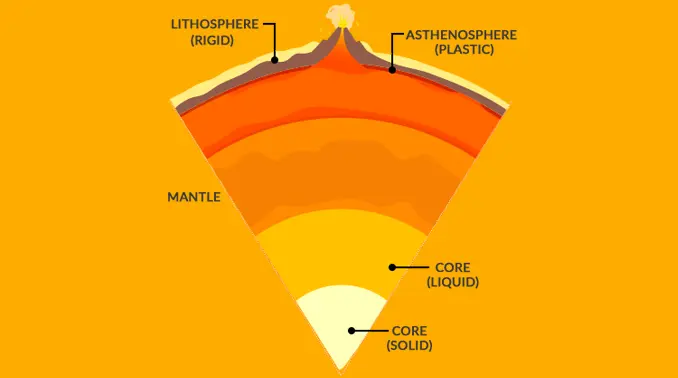
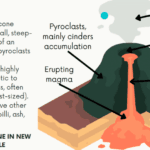
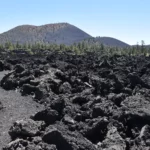
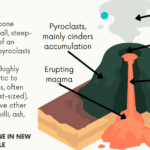
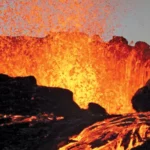

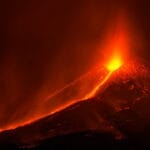



2 thoughts on “Fascinating Facts about the Asthenosphere”
Comments are closed.